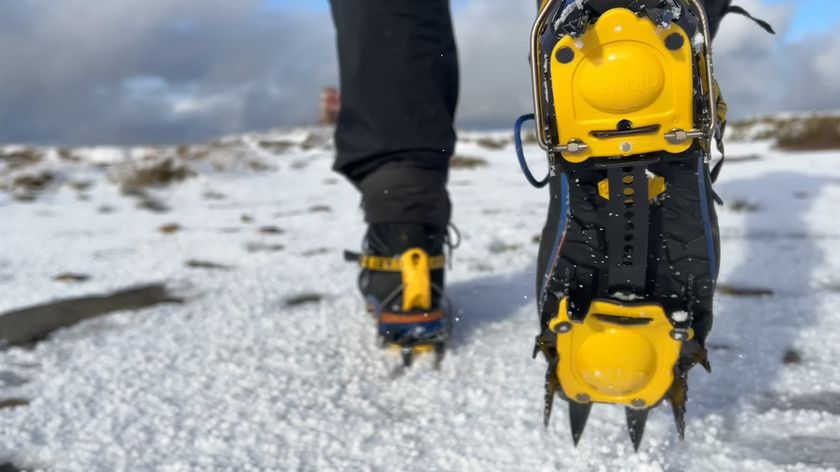How to chop firewood: split your campfire fuel with ease
Knowing how to chop firewood with or without an axe or maul will enable you to fashion pieces perfect for the campfire
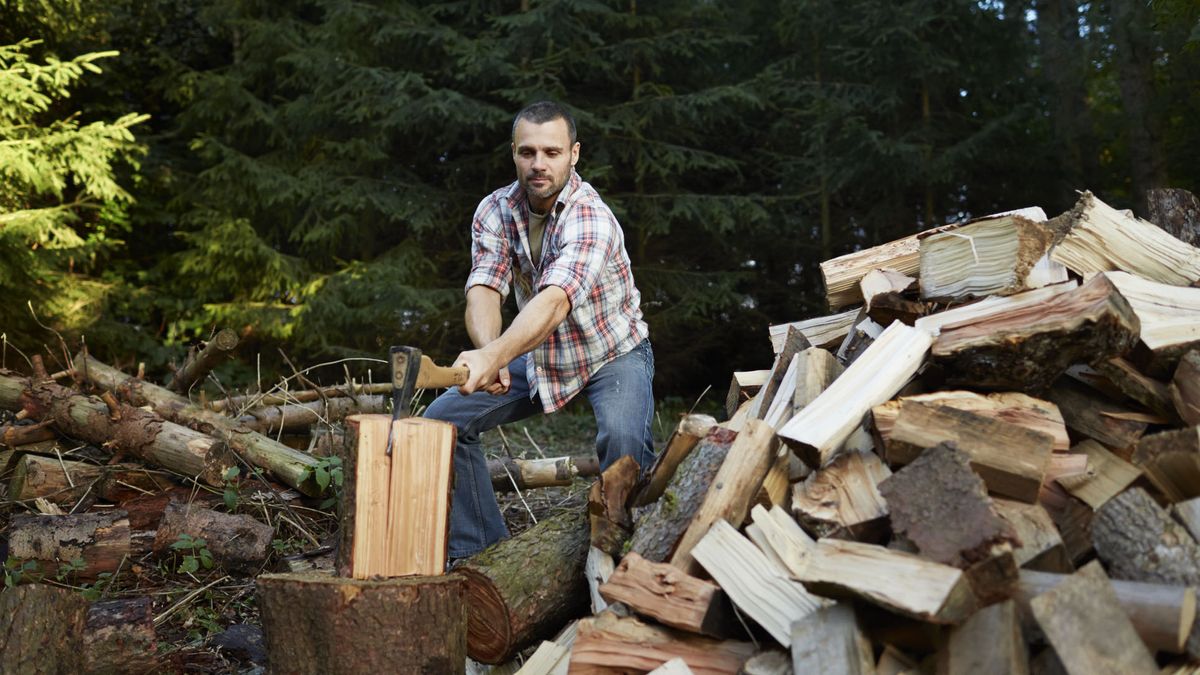
Those who know how to chop firewood know that there are two essential ingredients: knowledge of the correct technique and the right stuff. Now, when we talk about ‘the right stuff’ we’re not talking about personal attributes like strength and hardiness; no, we’re talking about the equipment you’re going to need to split those behemoth logs. With the required knowledge and the right equipment, anyone can learn how to chop firewood.
There are few things as satisfying as swinging a splitting axe into a large log and creating two pieces of firewood for yourself. Whether you’re creating a stash for the fire at home or preparing a campfire, knowing how to chop firewood means that you can create the optimum sized fuel for your blaze.

With the camping season now upon us, many of us will be heading to the backcountry in search of escapism. For us, the campfire is one of the highlights of any trip. There’s something about food cooked on a campfire that even the best camping stoves can’t match. Meanwhile, the ancient act of gathering around the flames to tell tall tales and sing under the stars never gets old, which is why people have been doing it for hundreds of thousands of years.
So, once you’ve sourced your fuel, either from a local store, or in the old-fashioned way from one of the best trees for firewood, you may need to chop it down to size, especially if you intend to cook on a wood-burning stove. Logs too big and your campfire won’t get going at all; too small and the fire will burn itself out before you’ve even finished singing Ring of Fire by Johnny Cash. Here’s our guide on how to do this (chop firewood, that is, not sing Ring of Fire).
How to chop firewood: what you’ll need
- A splitting axe or splitting maul
- A chopping block
- Wedges (for larger pieces of wood)
- Gloves
- Safety glasses
Depending on the size of your logs you’ll either need a splitting axe or a splitting maul before you unleash your inner lumberjack.
A splitting axe is the lighter of the two and is designed to split wood along the grain, breaking apart its fibers. Its metal head is tapered and the design of it is such that it shouldn’t get wedged in smaller pieces of wood, unlike what would happen with a traditional cutting axe.
A splitting maul takes the features of a splitting axe and combines them with the log splitting heft of a wedge and the weight of a sledgehammer. This makes it heavier and gives it a wider head than a splitting axe, making it even less likely to get jammed in the wood.
Advnture Newsletter
All the latest inspiration, tips and guides to help you plan your next Advnture!
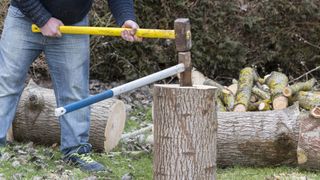
For larger logs, another approach is the combination of a wedge and a sledgehammer, often requiring two individuals: one to hold the wedge in place, the other to use the sledgehammer to set the wedge and then to drive the hammer down into the wedge to split the wood. A decent splitting maul will have a wedge-like head on one end and a sledgehammer on the other.
This video illustrates various splitting maul designs and how to chop firewood using them:
The reason a chopping block is so essential is that the lower your doomed piece of wood is, the more chance you have of missing it and bringing your axe swinging towards your feet – not ideal, I’m sure you’d agree. A chopping block lifts the wood off the ground and also means that the point at which you make contact is when the swing has the most downward momentum and power. Also, a hard chopping block won’t cushion your wood like the ground, meaning the full force of your swing is transferred rather it than being absorbed by the earth below.
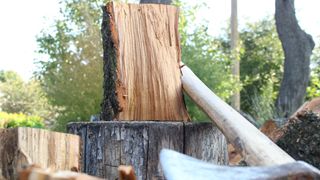
A word on safety. Eye protection is essential, especially if you’re driving a sledgehammer into a wedge. Metal on metal and the forces involved can cause sparks to fly, and not in a romantic way, as well as tiny metal shards. The last thing you want is a shard in your eye. People, wear safety goggles.
How to chop firewood: technique
Now that you’ve got the right tools, it’s time to do that most satisfying of tasks: splitting firewood. Accuracy is half the battle here; the goal is to strike the thin edge of the axe or maul’s head into the top of the log with enough force to split it. It makes sense to choose a line of weakness that’s already visible in the wood and try to impact towards the edge that’s closest to you rather than the very centre.
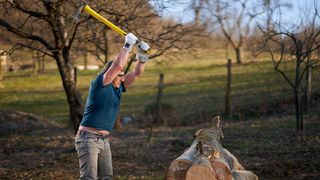
Place your feet shoulder width apart and square to your target. Hold the maul in two hands, one towards the base of the handle and the other by the metal head. Raise your maul over your head (but not behind it), slide the hand by the metal head down to meet your other hand and bring it down, keeping your eyes fixed on where you want to hit. You can use your full body and tip toes to initially extend, before bending your knees as you bring the axe down for maximum force.
How to chop firewood without an axe or maul
I know what you’re thinking, it's all very well knowing how to chop firewood using a maul but most of us don’t own one. Even if you did own one, you may not take such a heavy tool on a casual camping trip.
Fortunately, you can split smaller logs, like the kind you'll get from campsite stores, using a fixed blade camping knife. Work the blade into a pre-existing crack in the top of the log so that the thicker part is in contact with the wood and the knife’s tip is beyond the log.

Using a hammer, tap the knife down into the wood before beginning more aggressive blows once it is firmly in place. If you don’t have a hammer, you can use a hefty piece of wood to do this. Eventually, your knife will work its way down the log, splitting it in two.
This video shows this technique:
Alex is a freelance adventure writer and mountain leader with an insatiable passion for the mountains. A Cumbrian born and bred, his native English Lake District has a special place in his heart, though he is at least equally happy in North Wales, the Scottish Highlands or the European Alps. Through his hiking, mountaineering, climbing and trail running adventures, Alex aims to inspire others to get outdoors. He's the former President of the London Mountaineering Club, is training to become a winter mountain leader, looking to finally finish bagging all the Wainwright fells of the Lake District and is always keen to head to the 4,000-meter peaks of the Alps. www.alexfoxfield.com







